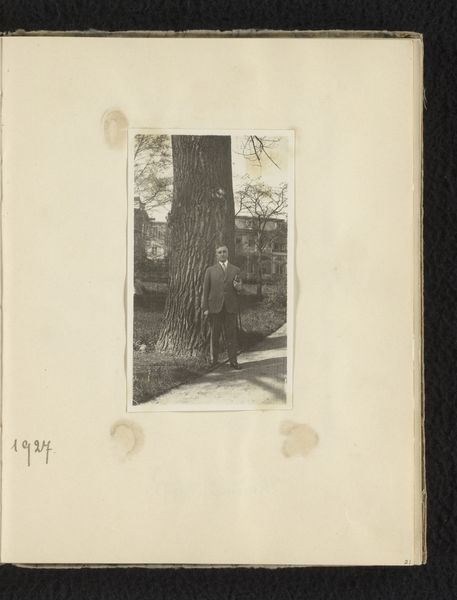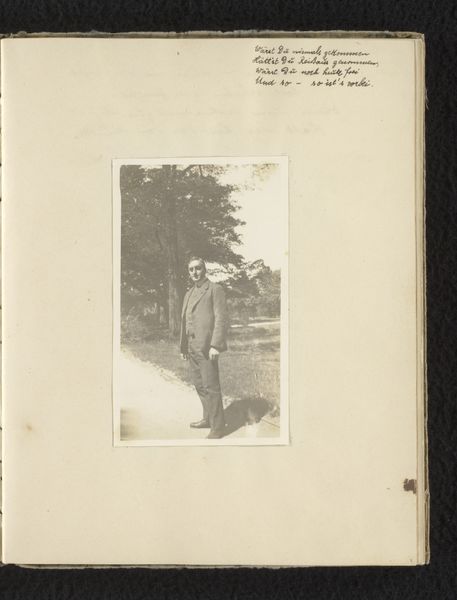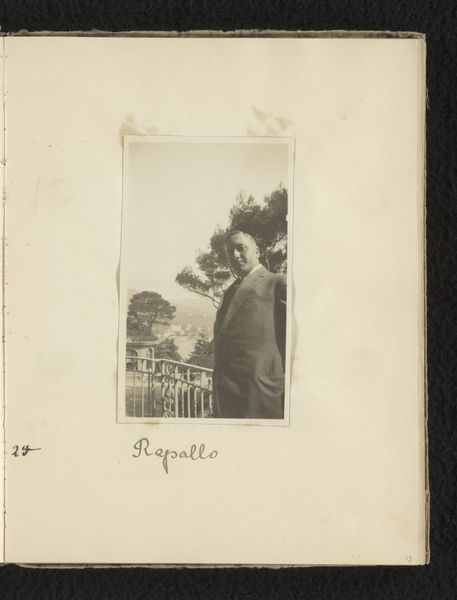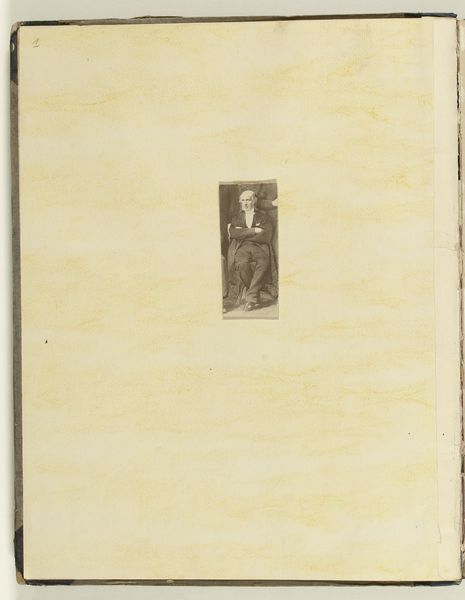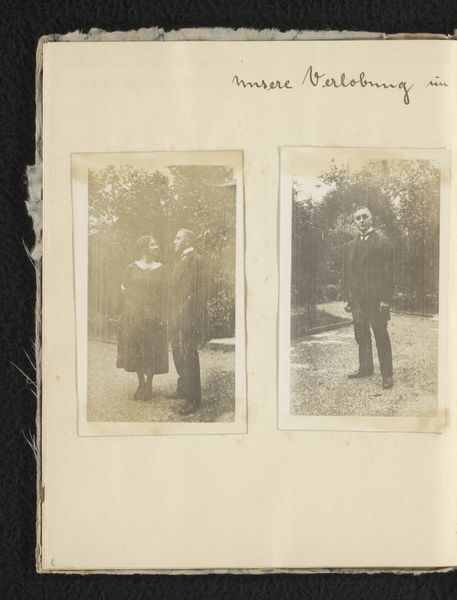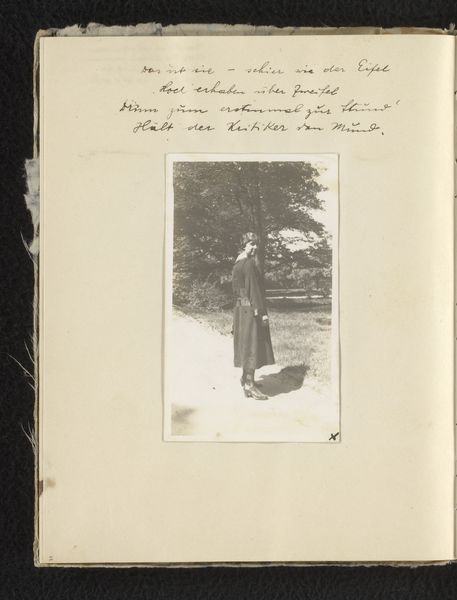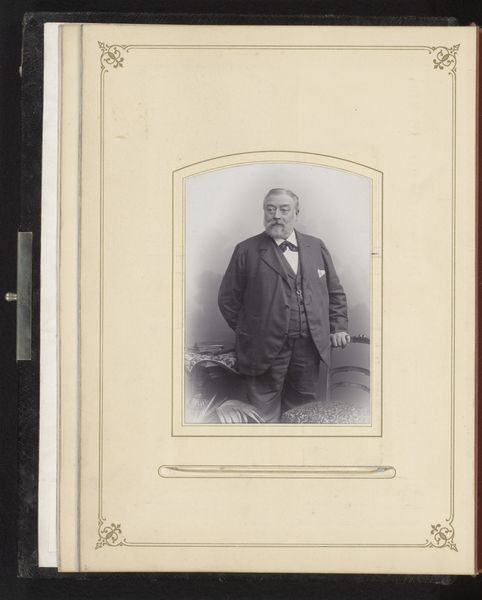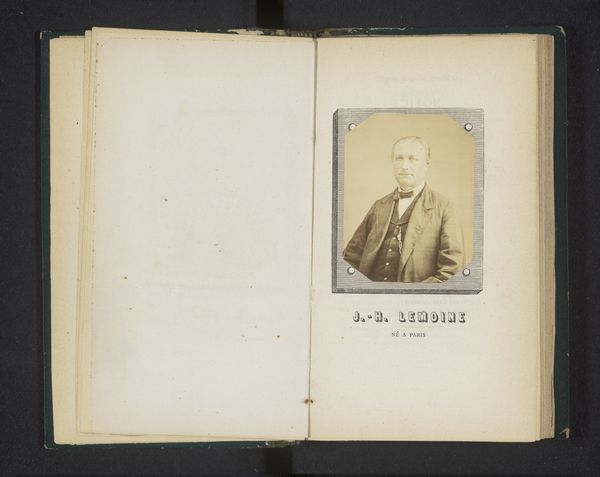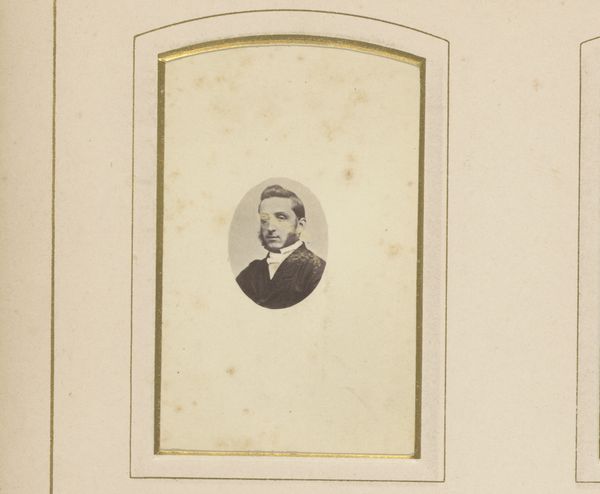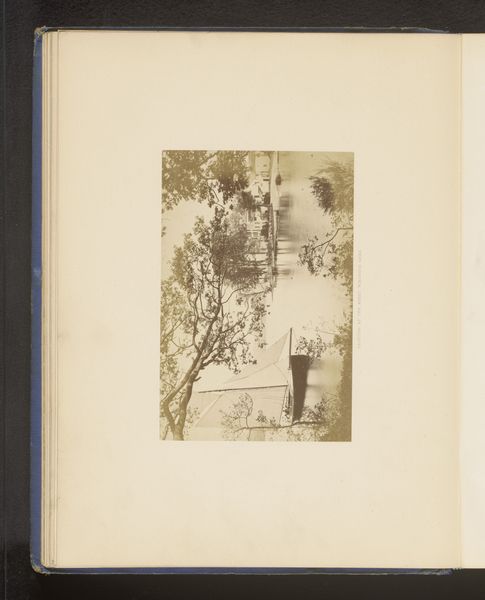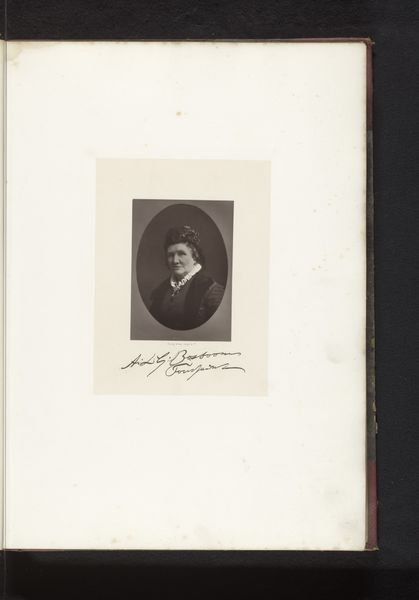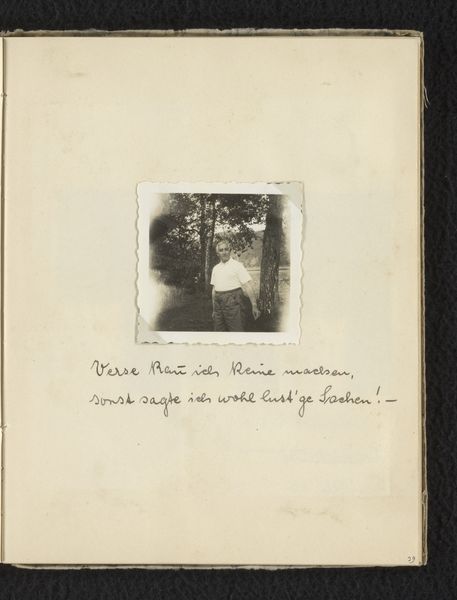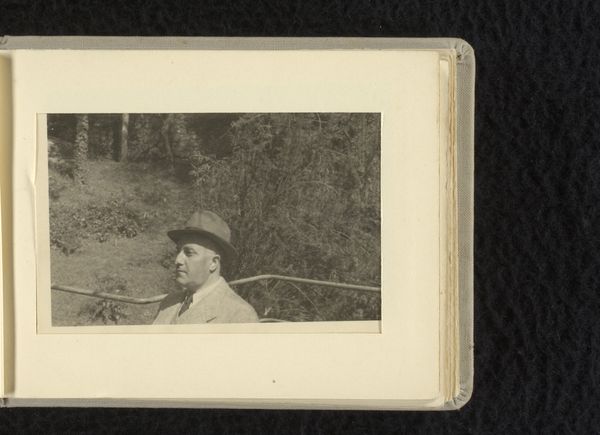
photography, gelatin-silver-print
#
portrait
#
landscape
#
photography
#
coloured pencil
#
gelatin-silver-print
#
cityscape
#
realism
Dimensions: height 110 mm, width 65 mm, height 205 mm, width 160 mm
Copyright: Rijks Museum: Open Domain
Editor: This gelatin silver print, "Eugen Wachenheimer voor een groot gebouw, 1927, Bad Kissingen" is dated 1927. It looks like a page from a photo album, depicting a man in a suit in front of what seems to be a large municipal building. The overall impression is of quiet dignity, but what else do you see? Curator: Well, on first glance, the placement of the figure—seemingly posed yet somehow off-center—suggests more than just a record of a man and a building. It's the layering of symbols, isn't it? The building behind him signifies stability, civic pride, perhaps even power. But the man, rooted to the earth and framed by organic life above, invites reflection on the transient nature of existence. What connections do you draw from that juxtaposition? Editor: I hadn't considered the tension between permanence and transience. So, the building is civilization, and the man represents the individual and perhaps also nature itself? Curator: Exactly! Look at the branches above—they soften the rigid lines of the building. Notice too, the shadow. The image captures a specific moment, but that shadow is both concrete and ephemeral, isn't it? That, to me, underscores a universal truth. Do you think the symbolism connects with the larger anxieties present in Germany during the interwar period? Editor: I think it could. Considering the period, I see it might speak to an uncertain future against the backdrop of established institutions. I guess what I’m trying to say is it is less about the person or the building but about something else! I see so much more now. Thank you. Curator: And that’s the magic of visual language. An image may be of a moment, but it can reverberate with meaning that lasts generations! It reminds us how profoundly human anxieties and hopes remain woven in these quiet images.
Comments
No comments
Be the first to comment and join the conversation on the ultimate creative platform.
